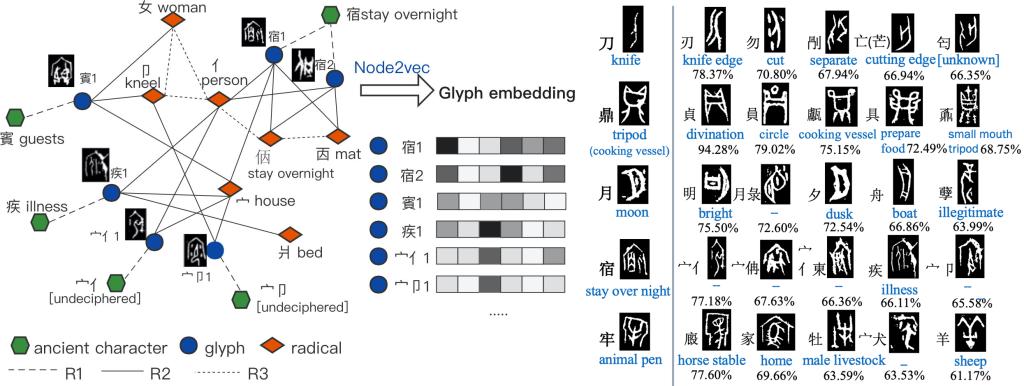" ZiNet: Linking Chinese Characters Spanning Three Thousand Years " was accepted by the international conference ACL 2022 (CCF A). The first author is Yang Chi. She graduated from the College of Software, Jilin University in 2016. Then she was recommended to the College of Computer Science and Technology, entered the HAI (Human Centered AI) Laboratory of Hao Xu professor for postgraduate study, and now she is studying for a doctorate in our college in 2019. The corresponding author of this paper is Professor Hao Xu. The collaborators include Professor Fausto giunchiglia, Chuntao Li, Professor of School of Archaeology, Jilin University, and Daqian Shi and Xiaolei Diao, doctoral students of the Department of computer science of the University of Trento, Italy.
Results:Modern Chinese characters evolved from 3,000 years ago. Up to now, tens of thousands of glyphs of ancient characters have been discovered, which must be deciphered by experts to interpret unearthed documents. Experts usually need to compare each ancient character to be examined with similar known ones in whole historical periods. However, it is inevitably limited by human memory and experience, which often cost a lot of time but associations are limited to a small scope. To help researchers discover glyph similar characters, this paper introduces ZiNet, the first diachronic knowledge base describing relationships and evolution of Chinese characters and words. In addition, powered by the knowledge of radical systems in ZiNet, this paper introduces glyph similarity measurement between ancient Chinese characters, which could capture similar glyph pairs that are potentially related in origins or semantics. Results show strong positive correlations between scores from the method and from human experts. Finally, qualitative analysis and implicit future applications are presented.

